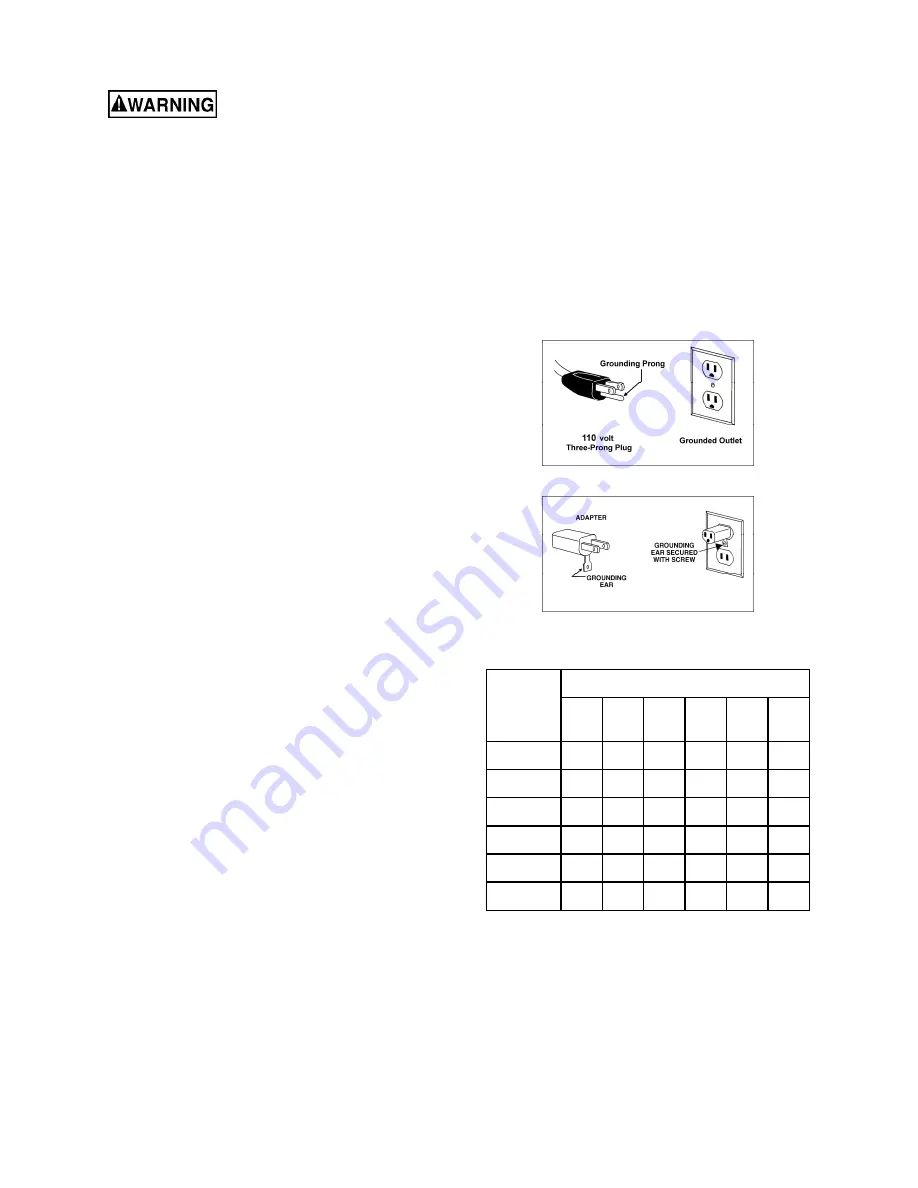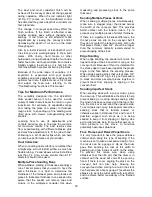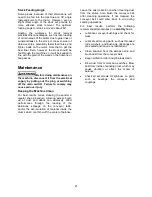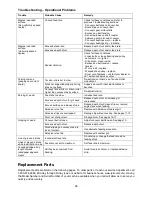
13
Grounding Instructions
Electrical connections must
be made by a qualified electrician in
compliance with all relevant codes. This
machine must be properly grounded to help
prevent electrical shock and possible fatal
injury.
In the event of a malfunction or breakdown,
grounding provides a path of least resistance for
electric current to reduce the risk of electric
shock. This tool is equipped with an electric cord
having an equipment-grounding conductor and a
grounding plug. The plug must be inserted into a
matching outlet that is properly installed and
grounded in accordance with all local codes and
ordinances.
Do not modify the plug provided. If it will not fit
the outlet, have the proper outlet installed by a
qualified electrician.
Improper connection of the equipment-
grounding conductor can result in a risk of
electric shock. The conductor, with insulation
having an outer surface that is green with or
without yellow stripes, is the equipment-
grounding conductor. If repair or replacement of
the electric cord or plug is necessary, do not
connect the equipment-grounding conductor to a
live terminal.
Check with a qualified electrician or service
personnel if the grounding instructions are not
completely understood, or if in doubt as to
whether the tool is properly grounded. Use only
three wire extension cords that have three-prong
grounding plugs and three-pole receptacles that
accept the tool’s plug.
Repair or replace a damaged or worn cord
immediately.
As received from the factory, your drum sander
is intended for use on a 20 amp, 110V dedicated
circuit, which has an outlet and a plug that look
like the ones illustrated in Figure 15. The sander
cannot
be rewired to voltages other than factory
settings.
A temporary adapter, which looks like the
adapter illustrated in Figure 16, may be used to
connect this plug to a two-pole receptacle, as
shown in Figure 16, if a properly grounded outlet
is not available. The temporary adapter should
only be used until a properly grounded outlet
can be installed by a qualified electrician.
This
adapter is not applicable in Canada.
The
green colored rigid ear, lug, or tab, extending
from the adapter, must be connected to a
permanent ground such as a properly grounded
outlet box, as shown in Figure 16.
Extension Cords
If an extension cord is necessary, make sure the
cord rating is suitable for the amperage listed on
the machine's motor plate. An undersized cord
will cause a drop in line voltage resulting in loss
of power and overheating.
Table 1 shows the correct size cord to use
based on cord length and motor plate amp
rating. If in doubt, use the next heavier gauge.
The smaller the gauge number, the heavier the
cord.
Figure 15
Figure 16
Recommended Gauges (AWG) of Extension Cords
Amps
Extension Cord Length *
25
feet
50
feet
75
feet
100
feet
150
feet
200
feet
<
5
16 16 16 14 12 12
5
to
8 16 16 14 12 10 NR
8
to
12 14 14 12 10 NR NR
12
to
15 12 12 10 10 NR NR
15 to 20
10
10
10
NR
NR
NR
21
to
30 10 NR NR NR NR NR
*based on limiting the line voltage drop to 5V at 150% of the
rated amperes.
NR: Not Recommended.
Table 1














































